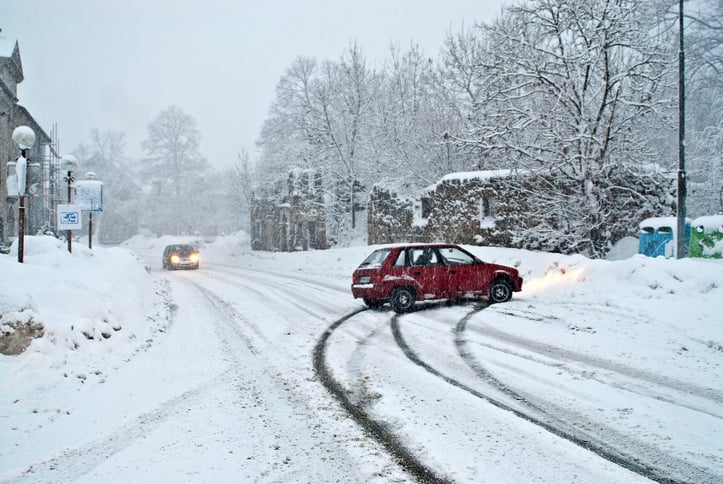If you've ever been in a car when it spins out, it can be a very scary experience. This article that we wanted to share with you comes from the Allstate Blog.

How to Keep from Spinning Out on Slick Roads (And What to Do If It Happens)
The cast of Ice Road Truckers knows everything about driving on icy road surfaces. If you think about it, it’s quite an accomplishment to haul one or more heavily loaded trailers through hundreds of miles of wintry conditions. And, if you’ve ever seen an episode, you probably noticed the expertise each demonstrates when his truck begins to spin out. Large trucks plus heavy loads equal a lot of momentum, and it takes a cool head and precise driving to prevent accidents.
Not many of us drive huge 18-wheelers on icy highways in the far north, but everybody who lives in a climate with cold winters runs the risk of encountering icy roads. About 190,100 crashes per year happen on icy pavement, according to statistics from the Federal Highway Administration. So, it’s important to know how to stay safe if you have to drive on icy roads.
Even if you’re an experienced driver, it’s a good idea to review the following points to help prevent you from spinning out:
- Maintain your car properly. Keep your car in tip-top shape. Make sure your battery, tires, and windshield wipers are in good condition and check anti-freeze levels regularly. Consider these cold weather car tips to help get your car ready for wintry roads.
- Plan your route. The National Highway Traffic Safety Administration says it’s important to plan ahead before you head out into wintry conditions. Don’t just program your GPS; review maps and take note of difficult turns and intersections, so you aren’t taken by surprise.
- Practice driving in wintry weather. Practice makes perfect, and that goes for driving in wintry conditions, too. The NHTSA suggests that you find an empty parking lot and rehearse driving maneuvers—carefully!
- Drive slowly. Moving too fast on icy roads can make it more difficult to stop your vehicle when you need to, so watch your speed and be careful.
- Know your brakes. Handling your vehicle correctly is key to surviving spinouts. If you have an anti-lock braking system (ABS), as most newer cars do, apply strong and continuous pressure. If your vehicle isn’t equipped with anti-lock brakes, pump on the brakes intermittently—do not slam on your brakes, as this could cause your car to skid.
- Keep your distance. Slick surfaces require a longer stopping distance, so keep a greater-than-usual distance between your car and other vehicles.
Even if you drive safely, an unexpected patch of ice can sometimes catch you unaware and set your car into a spin. If you find yourself in a skid, the NHTSA advises letting up on the gas and steering in the direction you want the front of your car to go. Experts warn that you should not hit the gas or the brake until you have control of your car again.
Of course, it’s always smart to avoid driving in winter conditions whenever possible. If you have to drive in the ice and snow, do what the “Ice Road Truckers” do: Check local weather warnings before leaving and keep the radio tuned to a local channel for the latest traffic alerts.
To read the original article, click here.